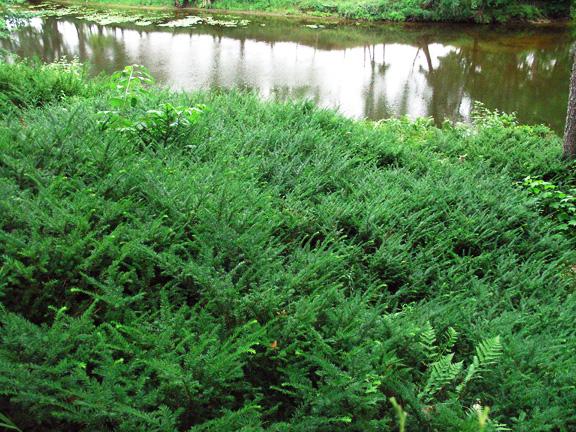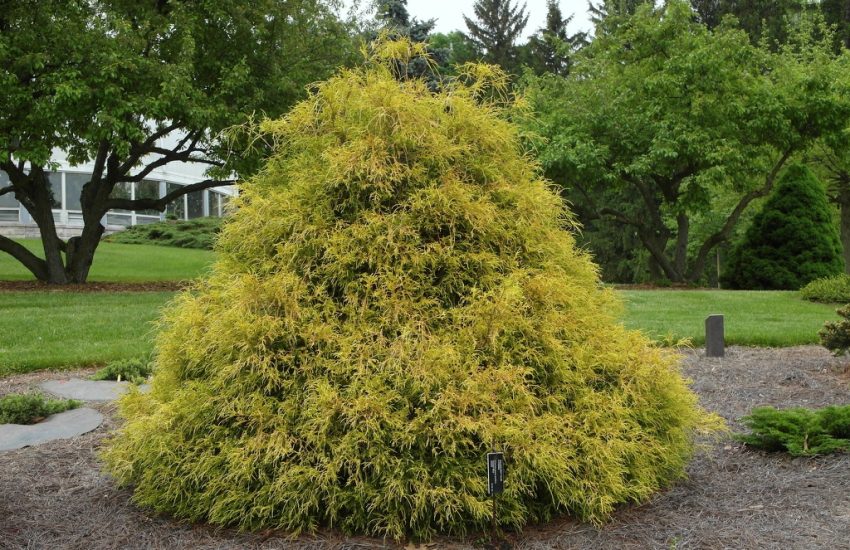12 Evergreen Trees to Grow in Idaho
Evergreen trees keep their leaves all year long and provide the area with a thick wall of green. As a result, they help indicate property limits, obstruct undesirable views, or for hedging. They are suitable habitats for birds and small mammals due to their ability to retain foliage all year. Idaho is a diverse state with high deserts and hilly landscapes. Before planting your evergreen tree, look carefully at Idaho's hardiness chart to ensure the species is appropriate for the region.
Best Evergreen Trees To Grow in Idaho
Evergreen trees are among the most incredible trees for backyard privacy because of their dense, year-round green leaves. They can help you create a refuge where you can fully immerse yourself in nature while blocking undesirable views and giving your garden a sense of privacy.
1. Canadian Hemlock
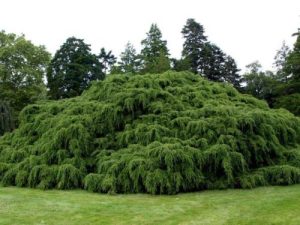
The tall, beautiful Canadian Hemlock thrives best in a cold, damp environment with partial shade. It has a sought-after pyramidal shape supported by a solitary central trunk. Short, black needles with a gray underside make up the leaves. Older barks get a trunk with furrows and a calming cinnamon tone. When left unpruned, they grow into a beautiful, lush, natural appearance, but they also take to pruning well for hedges or a more formal setting.
Canadian hemlocks perform better in direct sunlight than a forest edge tree. The position must be in the shadow, ideally in a wet area.
2. Cryptomeria Yoshino
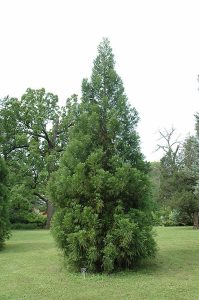
Japanese-style gardens are typical of the Cryptomeria Yoshino. It is a fast-growing, tall, dense evergreen with a pyramidal structure that thrives in wet, shady conditions but can also withstand full sun.
When exposed to cold, drying winds, the needles' color changes from bluish/green to bronze/purple in the winter. The Cryptomeria Yoshino can grow in various soil types and doesn't need much upkeep to look its best.
If left unattended, its lowest branches will descend to the ground and give the area where it is planted a lovely, natural appearance.
3. Red Pine
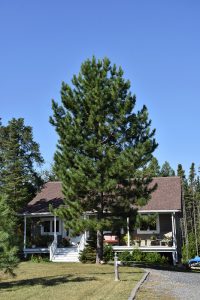
One of the most extensively planted pines in the United States, the Red Pine is ubiquitous throughout the American North, including Canada, where it is prized for its tall, straight trunk. There are numerous other Pine trees you may plant in your Idaho yard, though, if you're looking for something with a broader canopy or one that is a bit smaller.
The Red Pine is well adapted to the long winter of the higher altitude regions of ID because it can easily survive cold, wind, and snow. The Red Pine's lower branches self-prune or shed when they are dead. Before they get too big, they make excellent privacy trees or windbreaks when planted in groups.
4. Spartan Juniper
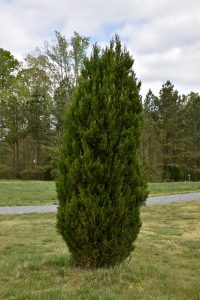
Fast-growing trees like the Spartan Juniper can be used as specimens or as privacy hedges. The tree is covered with uniformly spaced, dense, dark green foliage.
The Spartan Juniper requires little maintenance to maintain a stylish and formal appearance since, when left alone, it retains a clean pyramidal shape. It's ideal for gardeners in Idaho who desire a conical evergreen but don't have enough space for some of the more typical larger trees because they have smaller yards. It can thrive in practically any type of soil and withstand various challenging conditions, including heat, cold, drought, and salt. One of the toughest junipers is the Spartan kind.
5. Cryptomeria Radicans
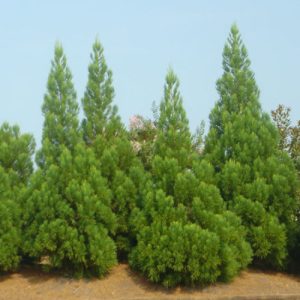
In ideal conditions, the densely growing evergreen Cryptomeria Radicans, which has fluffy foliage, can grow 3-4 feet yearly. It has a broad, slender shape that tapers to a point at the top. Once established, these resistant trees can withstand drought and grow in various soil conditions, including compacted clay. The greenery gives off a calm vibe, making it perfect for placement close to seating spaces. The Cryptomeria Radican can be planted and left alone because it requires little care or upkeep.
6. Emerald Green Arborvitae
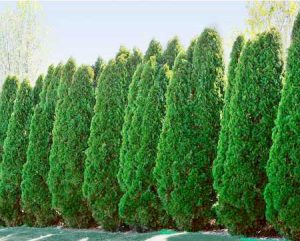
The Emerald Green Arborvitae is white Cedar with year-round, vibrant green leaves. The color becomes more emerald green as it ages. The leaf has a smooth, fluffy texture. They have a narrow, pyramidal shape, and because they grow quickly, you can build a green wall quickly. The Emerald Green Arborvitae may be suitable if you love Arborvitae (Latin for "tree of life") but lack space for the more significant types. They can grow in less-than-ideal environments with poorly draining soil and urban pollution since they are exceptionally adaptable trees. They'll acquire a more relaxed look whether growing in full sun or light shade.
7. Magnolia Grandiflora
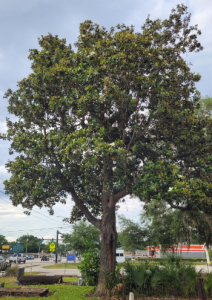
One of the most beautiful evergreen plants for gardens is the magnolia. Magnolia trees are striking in every season with their lush green leaves and fragrant lemony blossoms blooming in the spring.
The Magnolia grandiflora variety should be chosen if you want an evergreen tree for your yard because many magnolia trees are deciduous. They are highly adaptable trees and can grow in a wide range of soil types, although they do best in moist but well-drained, mildly acidic soils.
8. Holly Trees
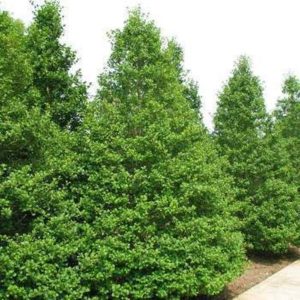
In the US, the two main varieties of the evergreen holly are in demand. The first is the English holly, a traditional holiday holly tree distinguished by its slightly curled, sharp leaves. Dark leaves with white borders make English holly trees with variegation a unique and attractive addition to the yard. They are the perfect evergreen trees for gardens because of their dense canopy and lower stature, often around 25 feet.
Although there are some significant differences, American holly trees are remarkably similar. These trees are bigger, reaching around 60 feet, and have slightly different berries and lighter-colored leaves.
Make sure you have one male for every one to five females for fruit to grow on these holly trees if you want to produce berries, which are ideal for feeding birds in winter. You plant in moist, acidic soil for the greatest results and choose a type appropriate for your growing environment. You shelter your plants from drying winter winds for easy maintenance and the best results.
9. Scarlet Firethorn
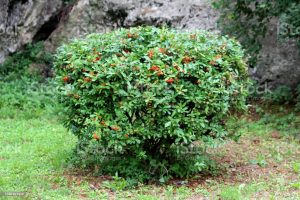
Scarlet Firethorns, distinguished by their deep crimson berries, prickly stems, and dense foliage, provide a wealth of advantages to the garden. Birds adore its berries, which are one of the best trees for fall color due to their brilliant red color. During the spring and summer, our feathery friends can nest safely among the prickly vegetation.
Scarlet Firethorn, which can grow up to 10 feet tall and offer a variety of pointed stems and dense foliage, can be cultivated to improve the protection and seclusion of your home and yard. Scarlet Firethorn is also one of the most challenging evergreen trees for gardens, making it ideal for less experienced individuals. They can flourish in practically any type of soil, including chalk, clay, loam, and sand, and they grow well in full and partial sunlight. Scarlet Firethorn, which can grow up to 10 feet tall and offer a variety of pointed stems and dense foliage, can be cultivated to improve the protection and seclusion of your home and yard. Scarlet Firethorn is
also one of the most challenging evergreen trees for gardens, making it ideal for less experienced individuals. They can flourish in practically any type of soil, including chalk, clay, loam, and sand, and they grow well in full and partial sunlight.
10. Strawberry Trees
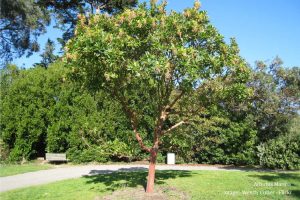
Strawberry trees are among the greatest evergreen trees for gardens due to their unique nature, making them a relatively subtle option. They brighten the gloomiest fall and winter days with their peeling bark, evergreen leaves, and tiny white blooms blooming from October to December. The strawberry tree is one of the greatest trees to cultivate in small gardens due to its modest growth rate.
11. Giant Arborvitae
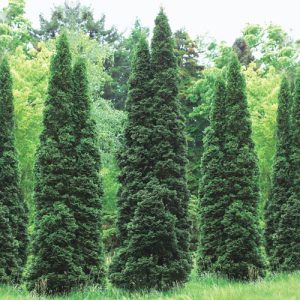
It's critical to consider the plant's requirements while choosing a location for your Giant arborvitae. Although it can tolerate soft shade, it prefers full sun and healthy, wet, well-drained soil. Once established, it can tolerate moderate heat and dryness.
Due to its rapid growth, you will need to allow for a big growing area or use it for topiary. One of the greatest evergreen trees for topiary, giant arborvitae, will make a lovely garden focal point. Simply shape your trees with spring pruning, and fall maintenance pruning.
12. Bald Cypress
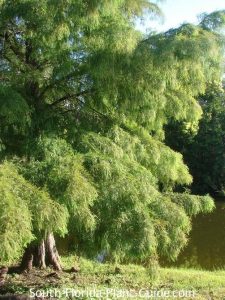
Despite its extensive habitat, which includes swampy places in the Mississippi River Valley in the Southeast United States, the roots of this adaptable tree can endure standing water. Low-lying locations and other open spaces are made more aesthetically pleasing all year round by the Bald Cypress tree.
Although it will also thrive in dry conditions, the Bald Cypress prefers standing water. The plant can tolerate various soil types and does well in full sun and moderate shade.
13. Weeping Willow
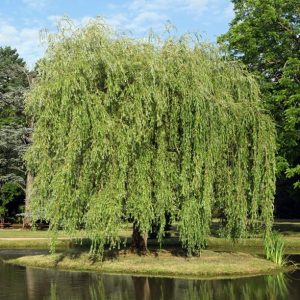
A weeping willow brings spring early. Weeping Willows offer the most vivid, vibrant green leaves early in the spring. Throughout the summer, you will enjoy the swaying of the sage-green, slender leaves.
The supple branches spread out in a magnificent arching arch before descending to the ground. When it reaches its apex in the fall, its golden yellow leaves start to turn an intense shade of orange.
If you live near water, you have the best soil type for a weeping willow. They will prosper if planted close to water. No amount of water is too much for a weeping willow tree. If moist soil collects water or remains moist, a weeping willow will assist in drying it off.
Weeping Willows can grow on even drier soils. Weeping willow trees thrive in moist environments but also adapt well to various soil conditions, including drought. Extreme weather, from excessively wet to extremely dry, is too much for many trees to withstand.
One of the fastest-growing shade trees, it grows 8-10 feet annually. Your preferred plant will grow fast to its full height. It quickly transforms a space into something beautiful thanks to its quick establishment and growth. Every lakefront or lakeside property ought to have one.
Conclusion
Living in a region with a chilly environment only requires you to endure the worst of the winter with access to vegetation.
Evergreen trees maintain their leaves throughout the growing season. They can perform a variety of tasks in the environment, including acting as windbreaks and green fences, as well as serving as a habitat for nearby wildlife.
They can also act as the foundation of your garden, where you can put shrubs and annual flowers of various sizes.

